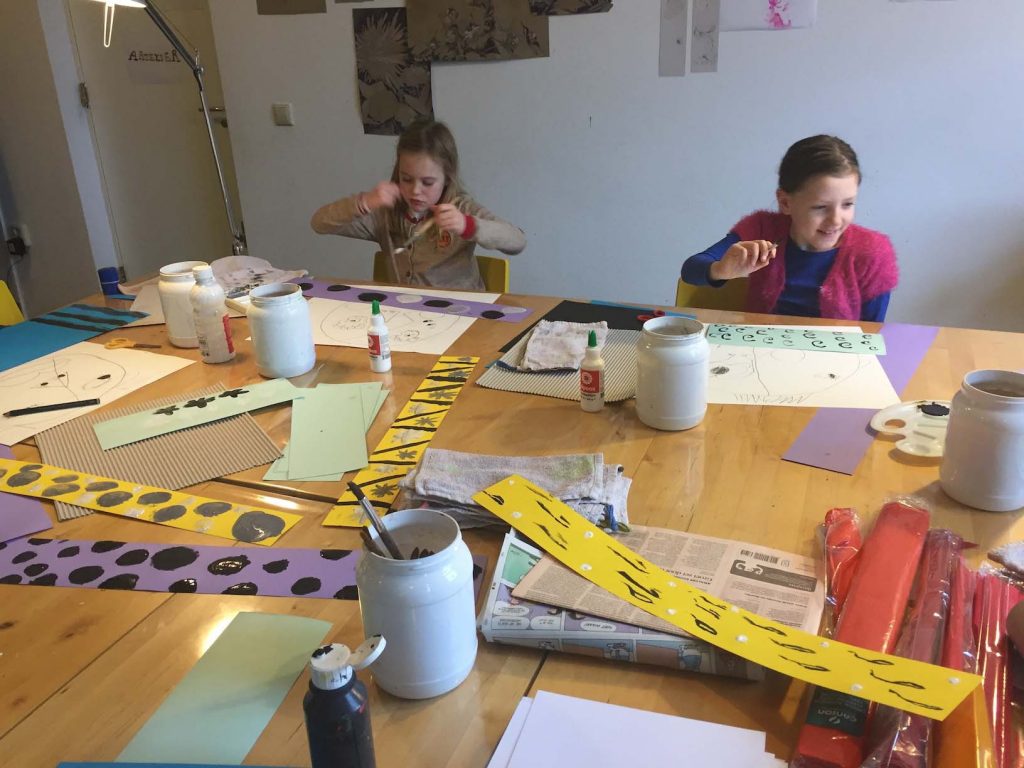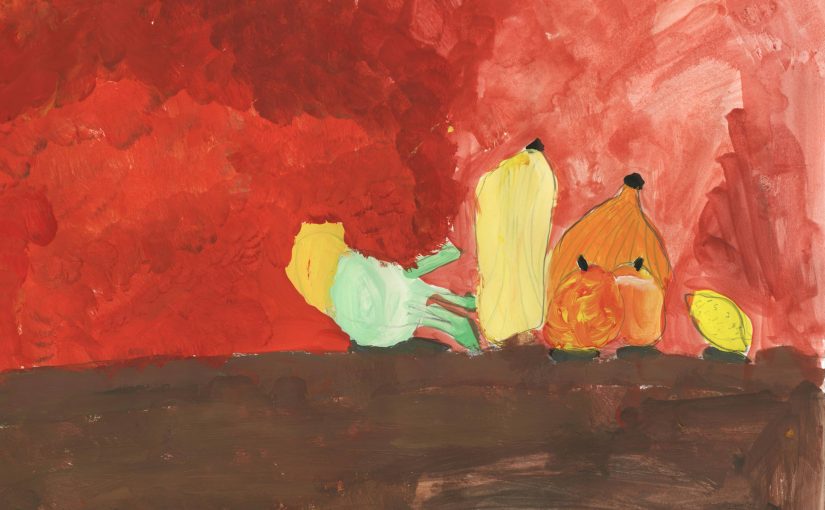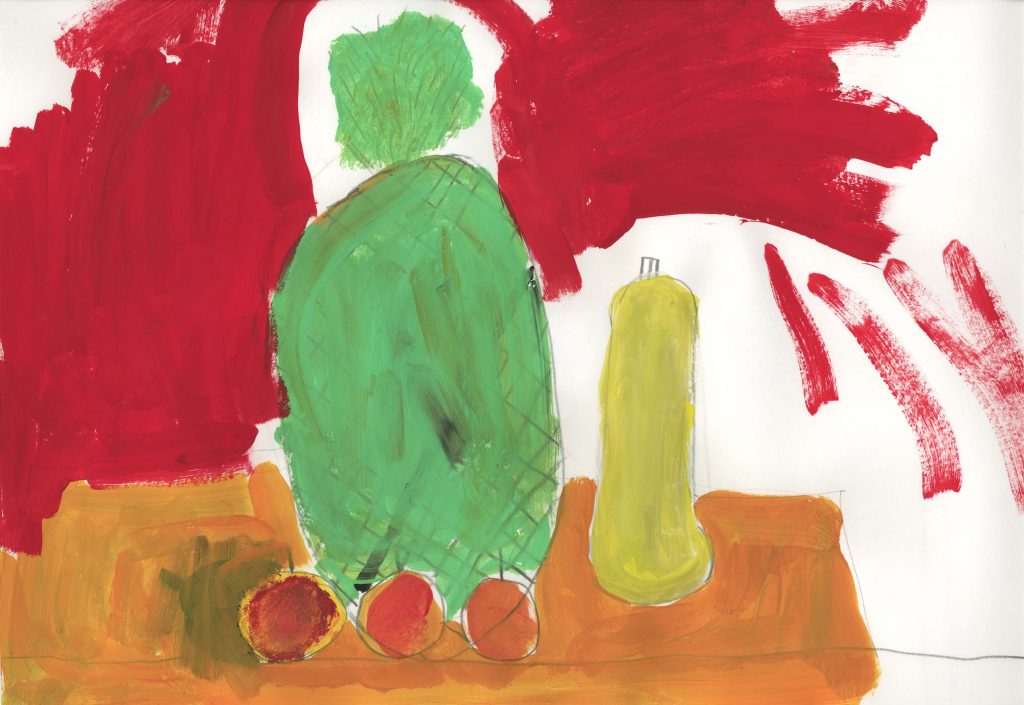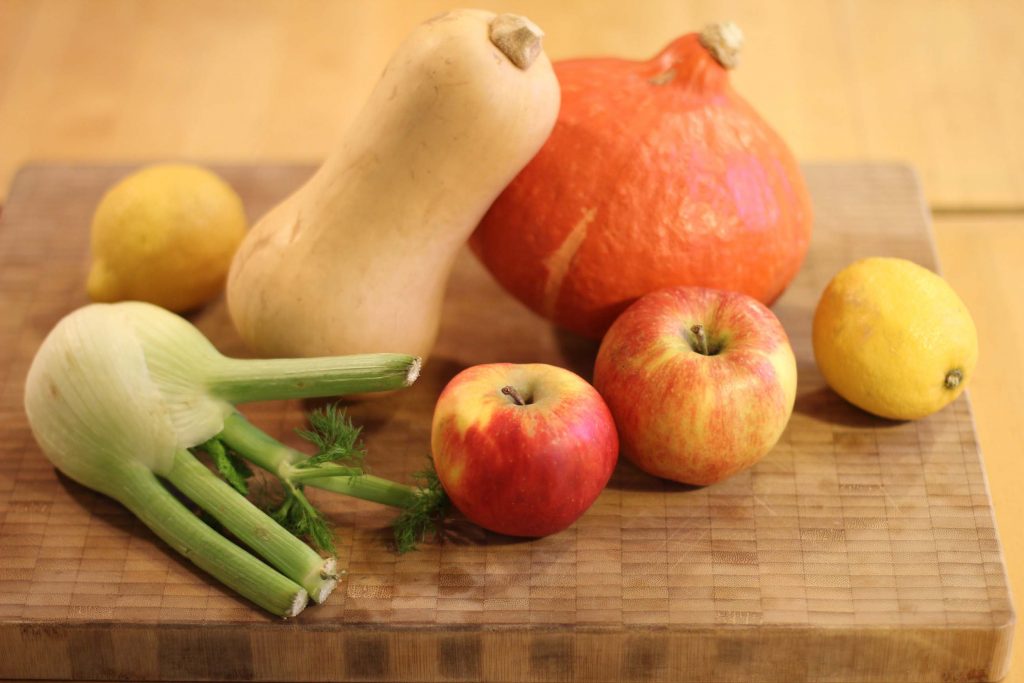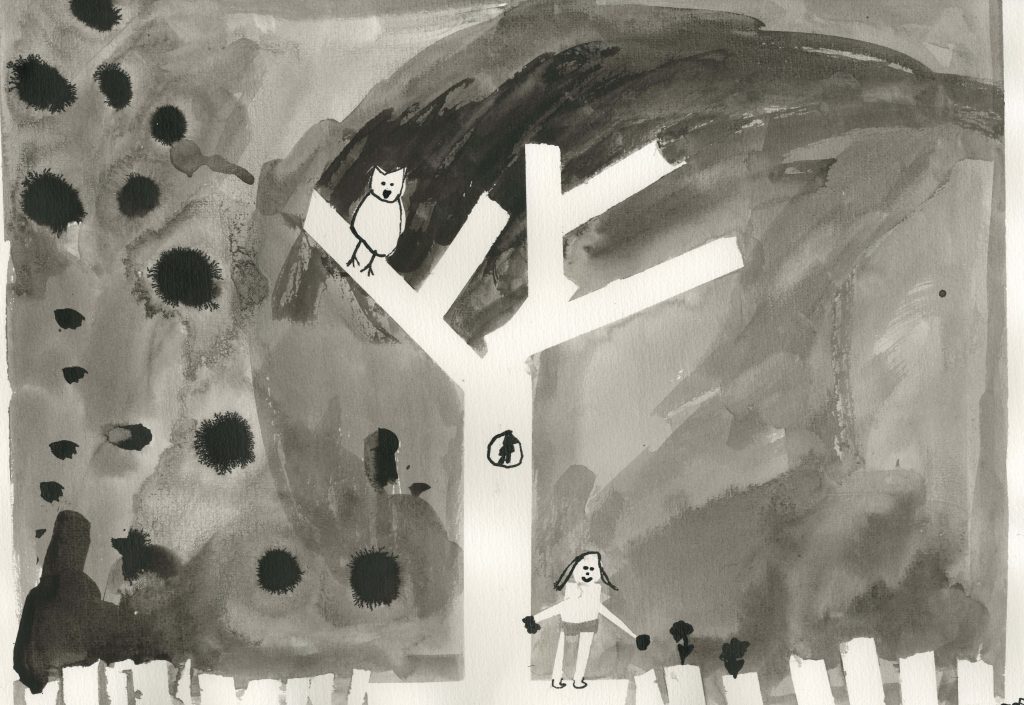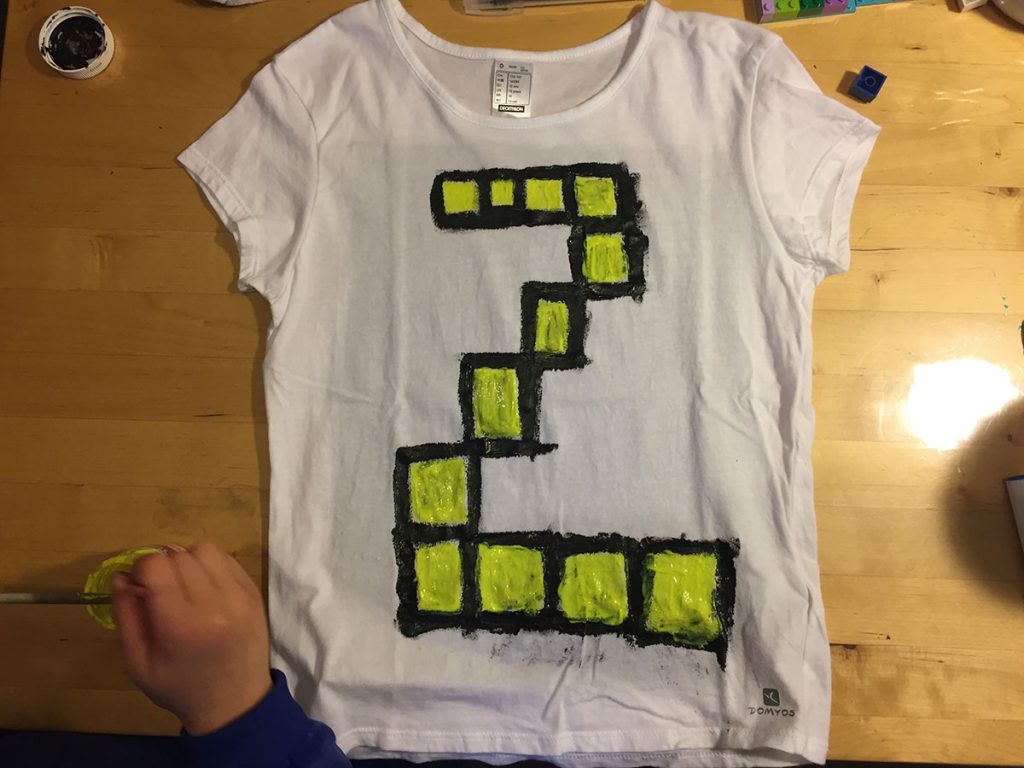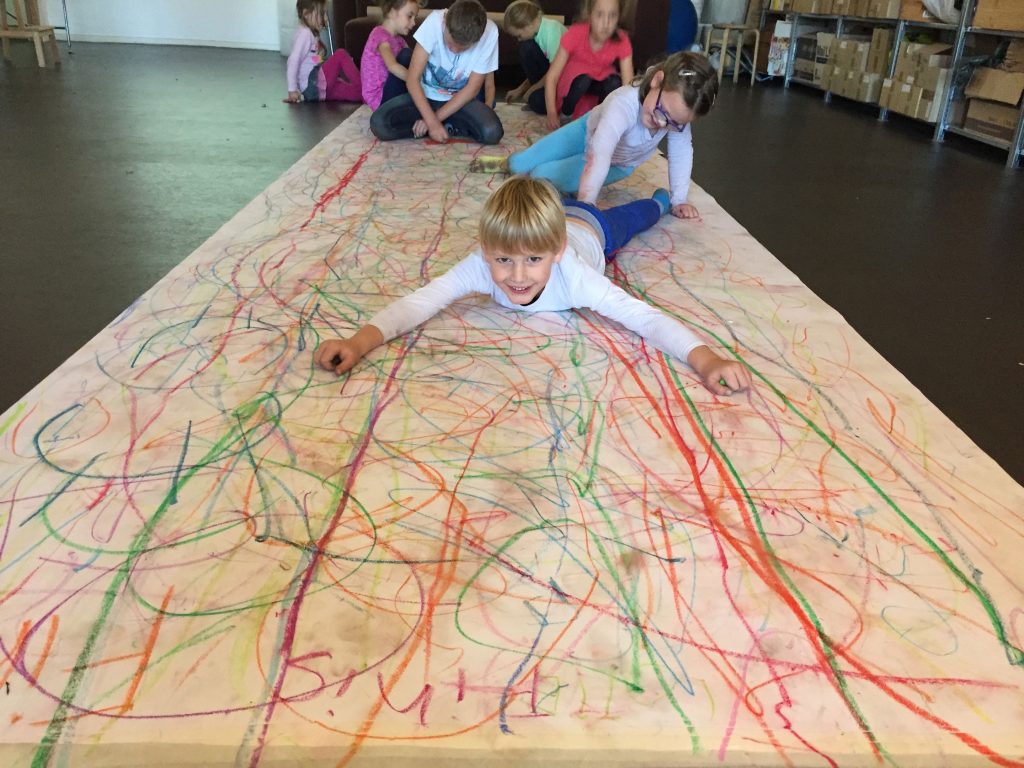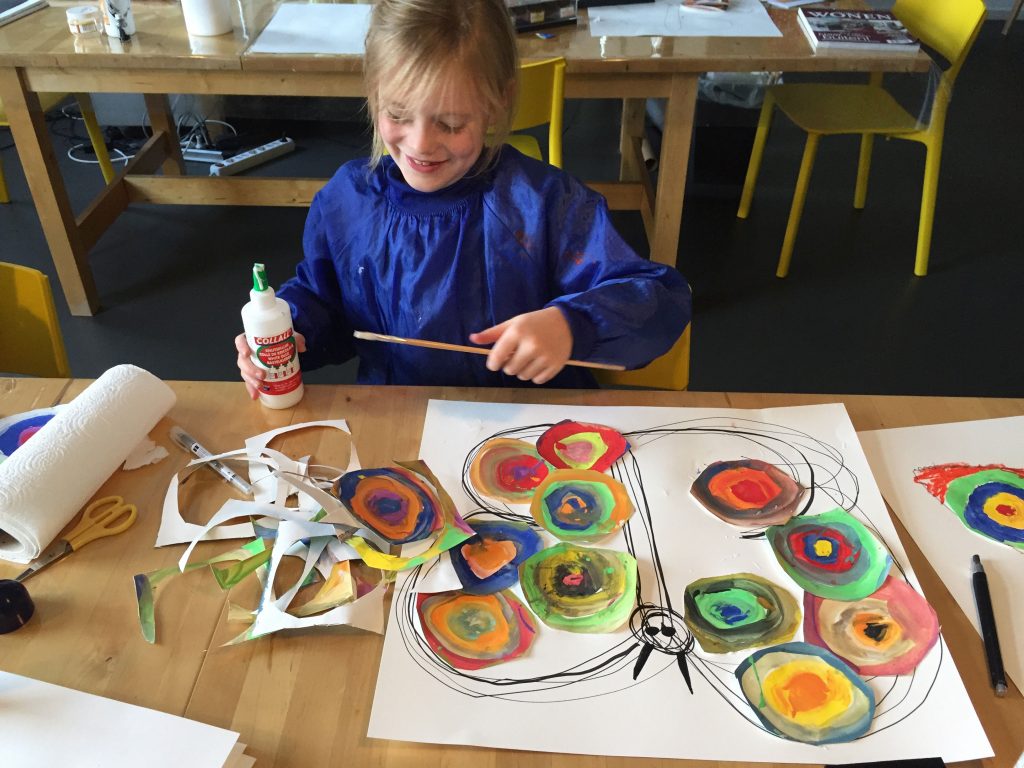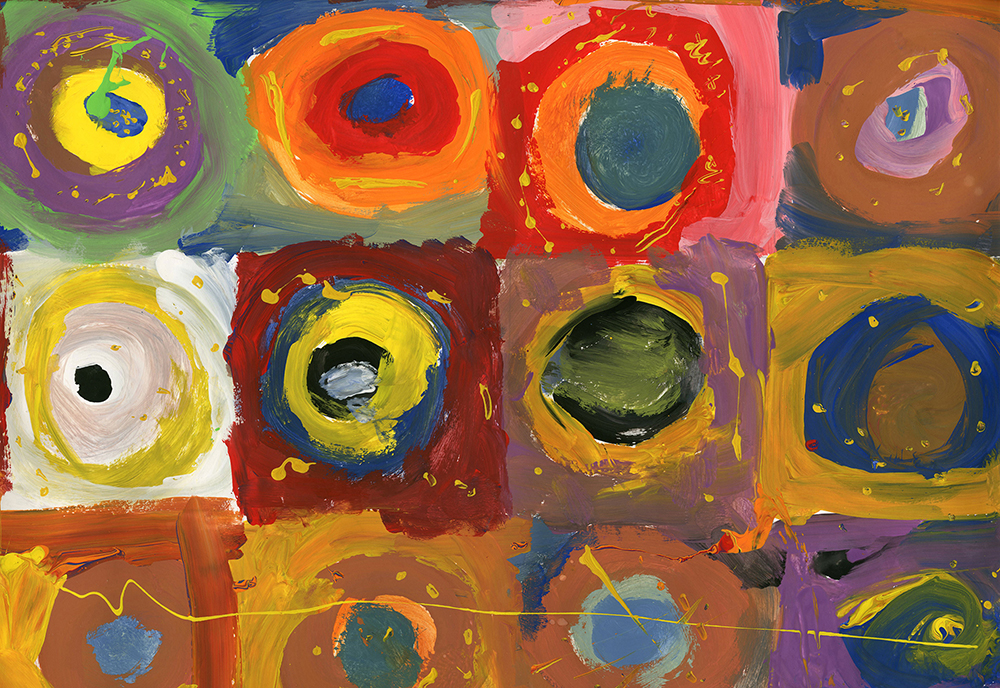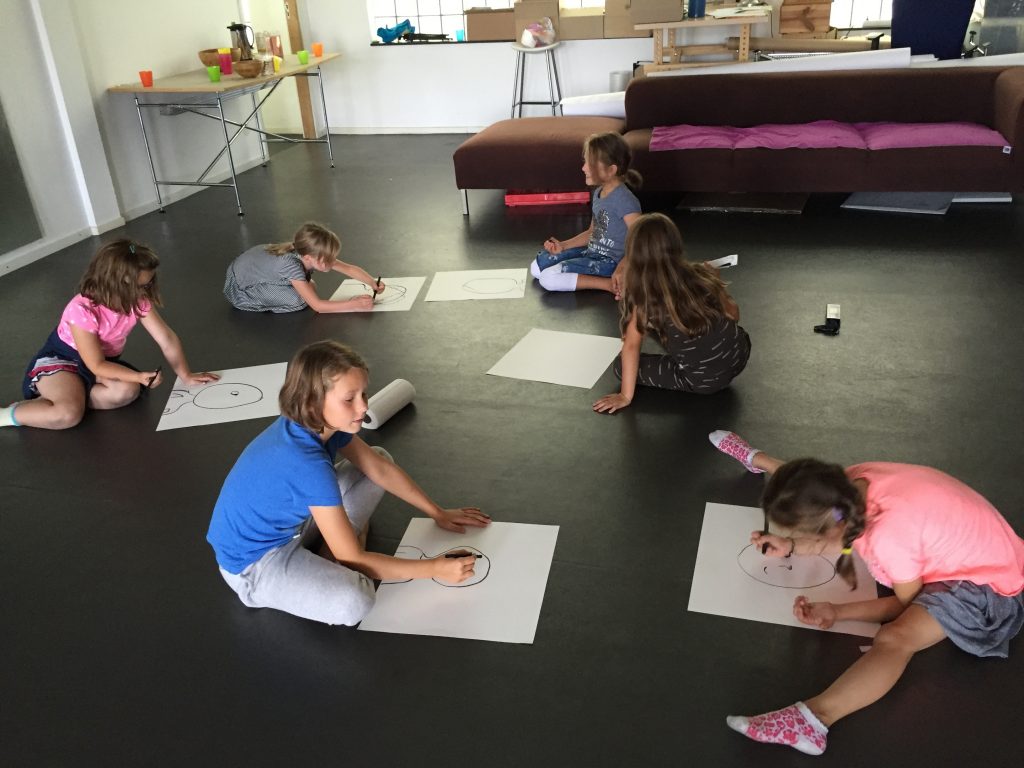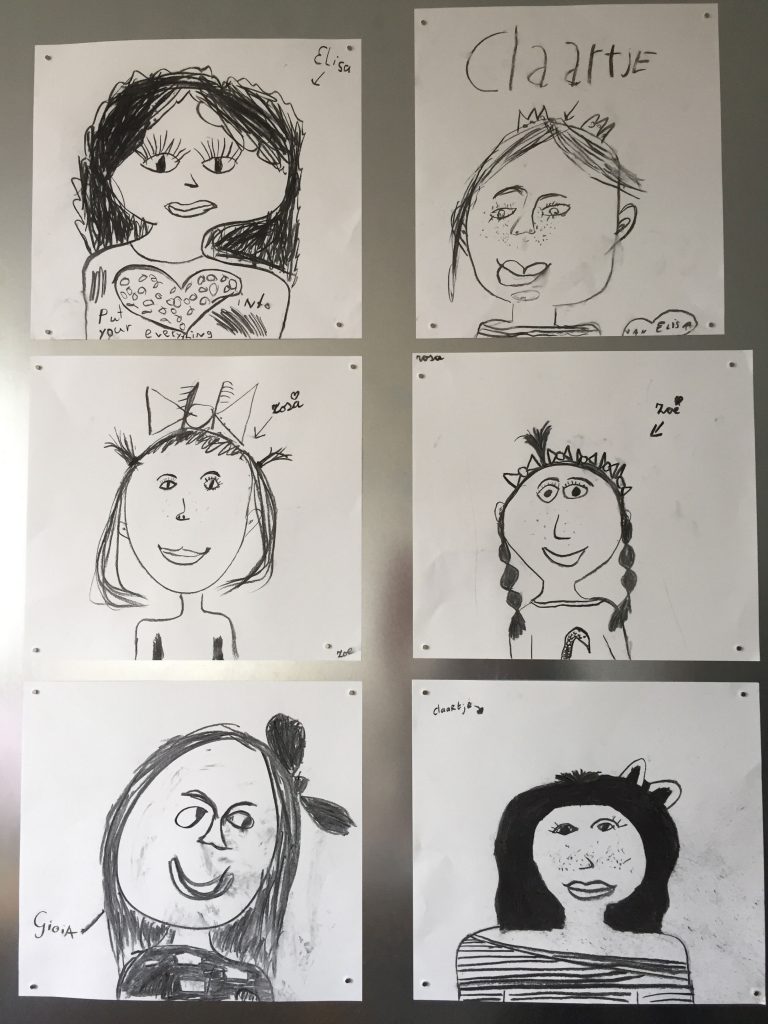To stimulate our imagination, we looked at Picasso’s portraits from his Cubism period; we also used a collage technique that was an important landmark in the history of Cubism. We started drawing fantasy portraits with pencil, and then we ‘designed’ many kinds of patterns using only black or white paint on coloured paper. Afterwards we cut out these patterns to follow through our mask ideas. We glued the pieces onto the drawings of the face and, where needed, we outlined the most important parts with a black pen. I take a lot of pleasure in the results; I hope you like them too :-). Great thanks goes to Luca Pals for her assistance.







